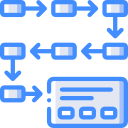Why Automation Matters in Payroll Compliance
Manual spreadsheets and late-night calculations invite errors that ripple into penalties, rework, and damaged trust. Automation codifies rules, validates inputs, and applies consistent logic, so every pay run reflects precise, repeatable decisions your team can verify, explain, and confidently defend.
Why Automation Matters in Payroll Compliance
Rules shift across jurisdictions, from overtime thresholds to local levies. Automated update pipelines and policy-as-code let you deploy changes quickly, test safely, and document intent. Comment with your toughest jurisdiction and we’ll share practical strategies that have worked for peers.







